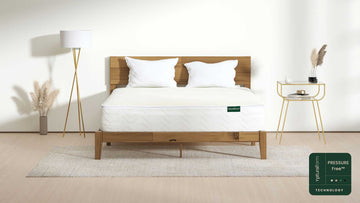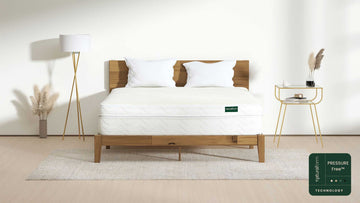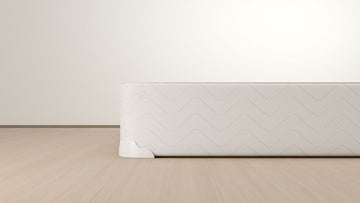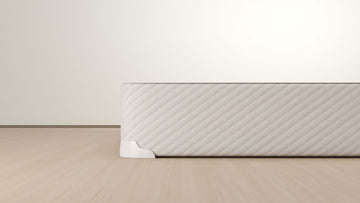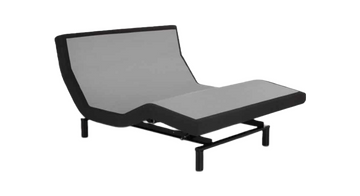According to data from the Sleep Assessment and Advisory Service, approximately 41 percent of people surveyed slept on their side. But while how you sleep may seem like a matter of personal preference, it turns out that sleeping on one’s side may offer unexpected benefits that other sleeping positions do not.
Consider, for instance, those who suffer from sleep apnea, a condition in which the airways become periodically blocked during sleep. Side sleeping, according to experts, provides better circulation to the airways, reducing pressure, and lessening the risk of an attack. Likewise, others have linked side sleeping to improvements in spinal alignment, suggesting that sleeping on one’s side helps to reduce pressure on the hips, pelvis, and shoulders.
Side pressure relief
Mattresses that fail to provide side pressure relief can leave you restless and tired. Too much pressure can block blood vessels, causing a numb or tingling sensation in the arms and legs.
Spinal alignment
Although it might be tempting to choose a very soft mattress, going too far in the opposite direction can be a problem too. Although soft mattresses are great for spreading your weight over a large surface area, they can cause your body to sink into the bed, throwing your spinal alignment out of whack.
Ideally, you want to achieve a neutral sleeping position – one that doesn’t transmit any additional stress into your back. For this reason, the mattress needs to be firm enough to prevent your spine from being thrown out of alignment but soft enough to avoid uncomfortable pressure points from developing.
Side sleeping with partners
If you’re shopping for a mattress as a couple, you can sometimes run into trouble if both partners prefer different sleeping positions. The mattress preferences of a side sleeper, for instance, are typically quite different from those of a back sleeper.
The good news is that it’s often possible for partners to compromise by choosing a mattress that is mid-way between both their preferences. The most straightforward solution is to select a middle-of-the-road mattress: one that sits in the so-called Goldilocks zone – not too hard, not too soft.
If you have a bigger budget, you can opt for what the industry calls a “blended product.” These mattresses, often bespoke, combine the needs of both partners after a consultation with a mattress expert. The expert will ask about things like preferred sleeping position, weight and existing back problems, and then incorporate these needs into a mattress with two independent sections, one for each partner. Natural Form, for instance, has excellent options in this area.
Adjustable bed for side sleepers
Adjustable beds are beds that can change their shape across a set of zones and can fold up or down near the head, the back, the legs, and the feet, depending on the model. Adjustable beds are a great option for side sleepers who struggle to avoid back pain during the night because of spinal misalignment.
Side sleepers typically find that they are most comfortable when the head is slightly raised and their knees bent. Sleeping in this way helps to reduce the stresses on the spine, allowing the surrounding muscles to relax. Adjustable beds make it easier for side sleepers struggling with back pain to get restful sleep so that they wake up fresh and ready for life’s many challenges.
The good thing about adjustable beds is that they aren’t just for side sleepers: practically anybody can benefit. Who says that mattresses should always be completely flat? Adjustable beds allow you to customize your sleeping experience, ensuring that it suits you.
Benefits from side sleeping
Better brain health
During the day, our brains tend to accumulate gunk between the cells, a little bit like the plaque that can build up in the arteries. Scientists believe, however, that sleeping on your side during the night puts the body in a better position to remove this potentially harmful waste. When they looked at the animal kingdom, they found that most animals sleep on their side, and theorized that this was because it provided better mechanisms to help clear lymphatic pathways and prevent neurological diseases, like Alzheimer’s.
